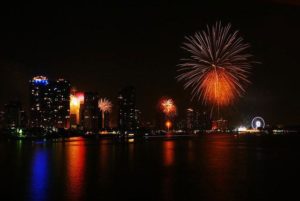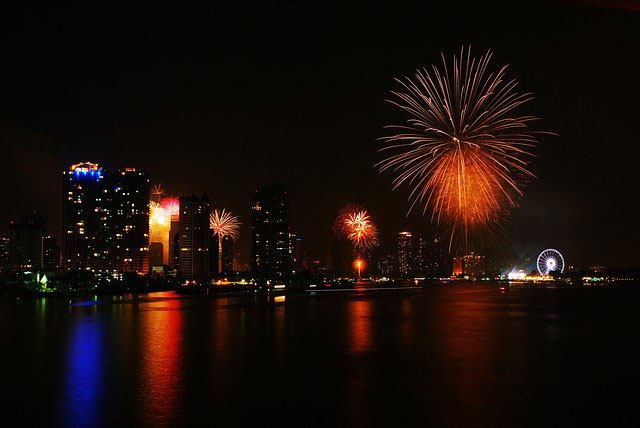We’ve already acquainted you with some fascinating Christmas traditions taking place in the continent of Asia, and today we’ve prepared something with that same spark of holiday spirit. We’ve engaged in the various jolly New Year traditions in Asia!
As you may already know – different countries in Asia follow different calendars. The result is the different dates and ways of celebration. Chinese and Korean people celebrate at the same time, and during those days their streets and homes are covered in festive crimson colors. Thai people organize whole water fighting events, with the intention of “washing away” the bad energy. The Japanese celebrate with the ring of bells, and the Balinese do so in complete silence.
Are you curious to find out more? Let’s get to it!
Chinese Lunar New Year or Spring Festival
The first country that pops in everybody’s minds when we mention “nontraditional celebrations” and “New Year” is China. And you aren’t wrong for it!
Chinese people are fascinated with their numerous traditions connected to the coming of the new lunar year, as well as the symbolism behind them. According to the myths, the red color that is so noticeably present in the celebrations in China is connected to a lion-like monster that is said to be afraid of this color, as well as of fire and noises. This is why the people of China chase it off with fireworks, loud songs and red decorations.
Family is very important in Chinese society, and that is why on New Year people do everything in their power to be with the ones they hold dear. They consume “longevity” meals and exchange genuine wishes of luck and prosperity. It’s a common ritual to swap red envelopes filled with money, as a way to encourage good fortune in the upcoming year.
Korean New Year or Seollal
 Like the Chinese, Koreans celebrate on the 16th of February. A lot of New Year’s traditions are quite alike – like the ever-present crimson color and the “good fortune” envelopes.
Like the Chinese, Koreans celebrate on the 16th of February. A lot of New Year’s traditions are quite alike – like the ever-present crimson color and the “good fortune” envelopes.
A common elaborate ritual that is performed by Koreans on Seollal is the “charye”. This is a ritual where the whole family commemorates their ancestors and receives their blessings. This happens through eating special food, prepared by the women of the family and brought to their ancestors by the men. Everybody wears traditional outfits called “hanbok”.
New Year in Thailand – Songkran
Songkran is celebrated by Thai and Laothian people from the 13th to the 15th of April. In ancient times, the date for the celebrations had to be recalculated every year because of the ever-changing soli-lunar calendar.
The celebration of Songkran turns into a literal three-days-long water fight. It’s a purification ritual, and being sprayed with water by someone is a sign that they wish you good luck. A good tip for tourists that are visiting those countries in this period is to keep their electronic devices protected!
But Songkran is not only about the water splashing and rowing competitions. It’s also about spending time with your family and visiting the Buddhist monasteries, to ask for cleansing and forgiveness.
Nyepi is what the Balinese call their New Year
Nyepi is a ritual based on the soli-lunar calendar, and is performed by people following Hinduism. It’s interesting how the celebrations take place days before New Year’s Eve. People wear scary masks and demonic effigies, burning bamboo figures of monsters in order to chase the bad spirits away. But when Nyepi comes around, the whole country shuts down. The government takes action by forbidding lights, cars and work. The day is spent in silence at home. Some believe this is done to trick the spirits into thinking everybody has left, resulting in making them leave too, while others say that this ritual of silence is connected to reverent self-control.
New celebration with old traditions in Japan
Before adopting the Western-style New Year in 1873, the Japanese also celebrated the beginning of the New Year according to the lunar calendar (“Setsubun”). Nowadays, a lot of the old traditions are transposed on the “new” New Year. Some of them include sweeping the whole house clean and scattering beans in order to chase away the evil spirits.
On New Year in Japan, the bells of Buddhist temples are rung 108 times, symbolizing the number of beads in a Buddhist rosary, and all of this is broadcasted on TV so everybody that’s staying home can witness it.
